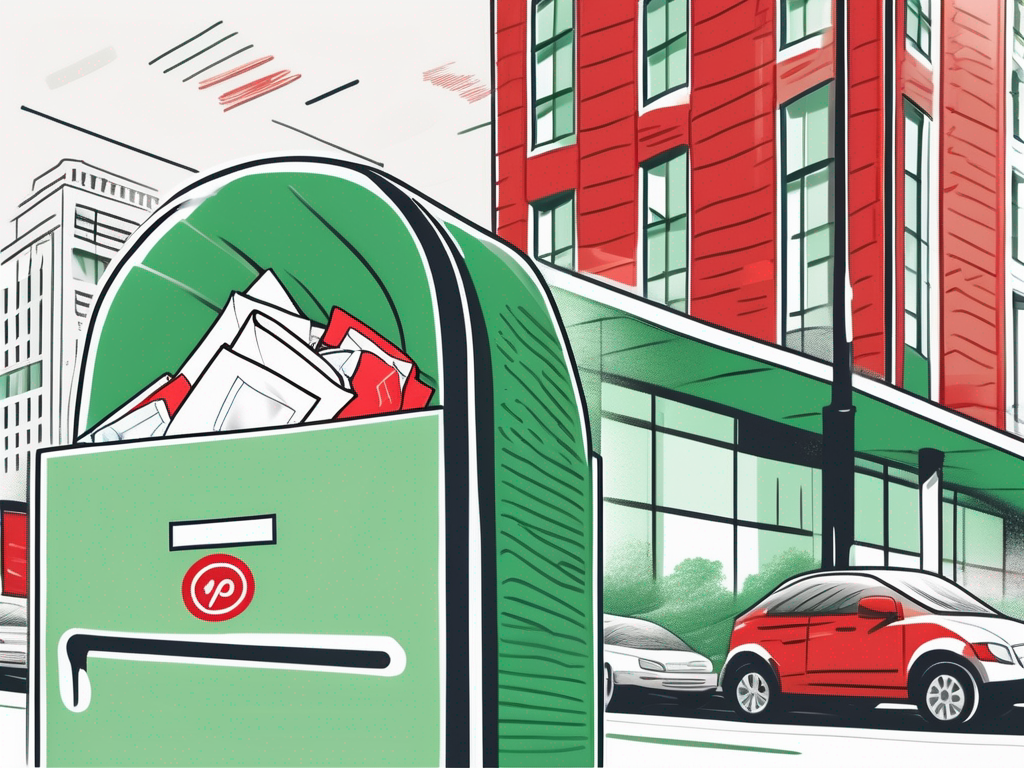Share this
How to Send Certified Mail: A Step-by-Step Guide
by Shipfusion Team on Jan. 28, 2025

Sending important documents through regular mail can feel like a leap of faith, especially when those documents need to reach their destination with guaranteed delivery. Certified mail, offered by the United States Postal Service (USPS), provides peace of mind with a verified chain of custody, enabling you to track and confirm the delivery of vital paperwork. This guide explains how to send certified mail, covering the essentials from choosing the right envelope to tracking and receiving confirmation of delivery—ensuring your documents arrive safely and securely.
What Is Certified Mail?
Certified mail is a secure USPS service that provides proof of mailing and tracks your mailpiece through each stage of the delivery process. Upon sending, the USPS assigns a unique tracking number and provides a receipt as proof of mailing. To further secure delivery, you can request a return receipt—an acknowledgment signed by the recipient that’s mailed back to you, which is especially valuable for legal, contractual, or sensitive communications.
Certified mail is frequently chosen by individuals and businesses alike for its high reliability. Businesses often use certified mail to dispatch critical documents like contracts, compliance notices, and official correspondence that require a verifiable delivery record. Choosing certified mail delivery proves especially valuable in the case of disputes by serving as an irrefutable record of both mailing and receipt.
Document security is generally the main use case for USPS certified mail. Ecommerce businesses requiring streamlined solutions for handling a broader range of shipping and fulfillment needs can trust Shipfusion for reliability on all fronts. Our proprietary ecommerce fulfillment software seamlessly integrates with USPS services, simplifying certified mail and other shipping processes for businesses just like yours. Get all of your logistics needs – including certified mail and priority mail – taken care of within a single, unified system.
Benefits of Using Certified Mail
Certified mail’s primary benefit lies in its security and transparency. The tracking number allows both sender and recipient to monitor the registered mail as it progresses through the USPS system, making it ideal for time-sensitive or legally significant communications. The option to add a return receipt serves as a further layer of confirmation, safeguarding both parties by creating a documented record of delivery.
But while certified mail offers individual tracking and security, businesses with high-volume mailing needs often struggle to allocate the necessary resources for preparation and tracking. The solution? Third-party logistics (3PL) companies like Shipfusion allow businesses to scale operations without worrying about manual tasks like preparing certified mail or monitoring individual deliveries. Our experienced teams ensure accurate handling and timely dispatch of your most important shipments, giving your team time to focus on growth.
Preparing Your Certified Mail
Successful certified mailing begins with selecting the correct envelope or box size to ensure safe transport. Choose a sturdy certified mail envelope for documents or a padded mailer for fragile items, and if using custom shipping boxes, confirm that the mailpiece meets USPS certified mail standards for size and weight.
Choosing the Right Envelope or Package
Durability is crucial. For documents, opt for a standard certified letter envelope; for bulkier or fragile items, a padded envelope or flat-rate shipping box may offer added protection. Use a scale to weigh your package to ensure accurate postage, and check the USPS website for size guidelines to avoid processing delays.
Addressing Your Certified Mail Correctly
Clear and accurate addressing is essential. Write the recipient’s full name, street address, city, state, and ZIP code in the appropriate areas. Consider using printed labels to avoid errors, and include a shipment return address to allow for easy returns if necessary. Save the tracking number from the label for future reference, as it is your primary tool for monitoring the mailpiece’s journey.
Purchasing Certified Mail Service
Certified mail services are available at any post office counter or online through USPS.com, offering the flexibility to manage your mailing needs from home or in-person. Once purchased, USPS will provide you with a tracking number that allows you to follow your registered mail in real-time.
Where to Buy Certified Mail Service
Buying certified mail service in person offers access to assistance from USPS clerks, who can ensure you’re using the correct forms and provide guidance on additional services like priority mail, return receipts, or insurance. Alternatively, if time is tight, the USPS website allows you to print your certified mail label at home. Managing certified mail online is a much more convenient option for busy individuals or businesses in need of restricted delivery services for multiple locations.
Cost of Certified Mail Service
The base cost of certified mail varies based on weight and additional services. Always check the USPS website or inquire at the post office for current pricing to ensure you budget accurately. If you require a return receipt or priority mail, be prepared to pay a small additional fee.
Sending Your Certified Mail
After your certified mail is prepped and labeled, it’s time to send it off. Certified mail requires in-person drop-off at a USPS counter for proper processing and confirmation. Keep the receipt as it contains the tracking number, providing an official record that your item has entered the USPS system.
Tracking Your Certified Mail
With the tracking number on your receipt, you can monitor your certified mail’s journey through the USPS website. Additionally, you may opt to receive email or text notifications for regular updates on delivery status, keeping you informed every step of the way.
Receiving Confirmation of Delivery
Certified mail provides proof of delivery, which is particularly valuable for sensitive communications. If you added a return receipt to your service, you’ll receive either a signed postcard or an electronic confirmation, which you can use to verify the recipient’s acknowledgment of receipt of the registered mail.
How to Get Proof of Delivery
USPS automatically processes delivery confirmation for certified mail, viewable through online tracking. For added assurance, request an electronic return receipt; while the physical postcard and electronic version confirms the delivery, date and recipient’s signature, digital records are much harder to lose.
Understanding Return Receipts
Return receipts enhance the security of certified mail, especially for legal or compliance-related documents. Available as either a signed postcard or an electronic acknowledgment, return receipts provide concrete evidence of the document’s receipt, which is often essential in contractual or legal matters.
Don't Know How to Send Certified Mail? Shipfusion Can Do It for You.
Sending USPS certified mail ensures that important documents reach their destination securely and with complete tracking. With clear proof of delivery and the option for return receipts, certified mail is an invaluable tool for anyone needing dependable mailing options. For businesses with ongoing needs for secure delivery, Shipfusion offers a range of fulfillment solutions that integrate seamlessly with USPS services.
Unlock a new level of logistics expertise by contacting us today.
Share this
You May Also Like
These Related Articles

Understanding 3PLs: Your Guide on How to Create an Inventory Strategy

Shipfusion Solutions Q&A

Companies Who Don't Offer Free Shipping But Succeed Anyway
- April 2025 (18)
- March 2025 (26)
- February 2025 (26)
- January 2025 (37)
- December 2024 (16)
- November 2024 (23)
- October 2024 (22)
- September 2024 (27)
- August 2024 (9)
- July 2024 (8)
- June 2024 (5)
- May 2024 (8)
- April 2024 (8)
- March 2024 (6)
- February 2024 (6)
- January 2024 (5)
- December 2023 (3)
- November 2023 (3)
- October 2023 (5)
- September 2023 (4)
- August 2023 (2)
- July 2023 (1)
- June 2023 (4)
- March 2023 (2)
- October 2022 (1)
- September 2022 (5)
- August 2022 (4)
- July 2022 (7)
- June 2022 (4)
- May 2022 (4)
- April 2022 (6)
- March 2022 (2)
- February 2022 (1)
- January 2022 (3)
- December 2021 (2)
- November 2021 (4)
- October 2021 (2)
- September 2021 (5)
- August 2021 (4)
- July 2021 (4)
- June 2021 (3)
- May 2021 (2)
- April 2021 (3)
- March 2021 (3)
- February 2021 (3)
- January 2021 (2)
- December 2020 (4)
- November 2020 (2)
- October 2020 (4)
- September 2020 (2)
- July 2020 (5)
- June 2020 (4)
- May 2020 (2)
- April 2020 (2)
- March 2020 (4)
- February 2020 (1)
- December 2019 (1)
- May 2018 (1)
- March 2018 (2)
- February 2018 (3)
- January 2018 (3)
- November 2017 (3)
- July 2017 (4)
- March 2017 (3)
- February 2017 (5)
- January 2017 (3)
- December 2016 (4)
- November 2016 (6)
- October 2016 (6)
- October 2015 (1)
- September 2015 (1)
- June 2015 (3)
- May 2015 (3)
- August 2014 (1)
- July 2014 (1)
- March 2014 (1)
- February 2014 (1)